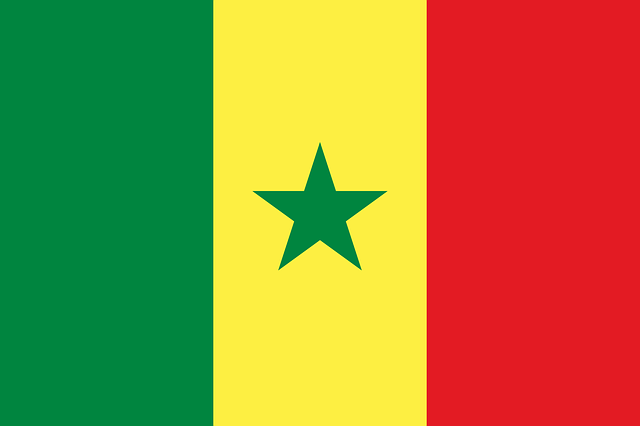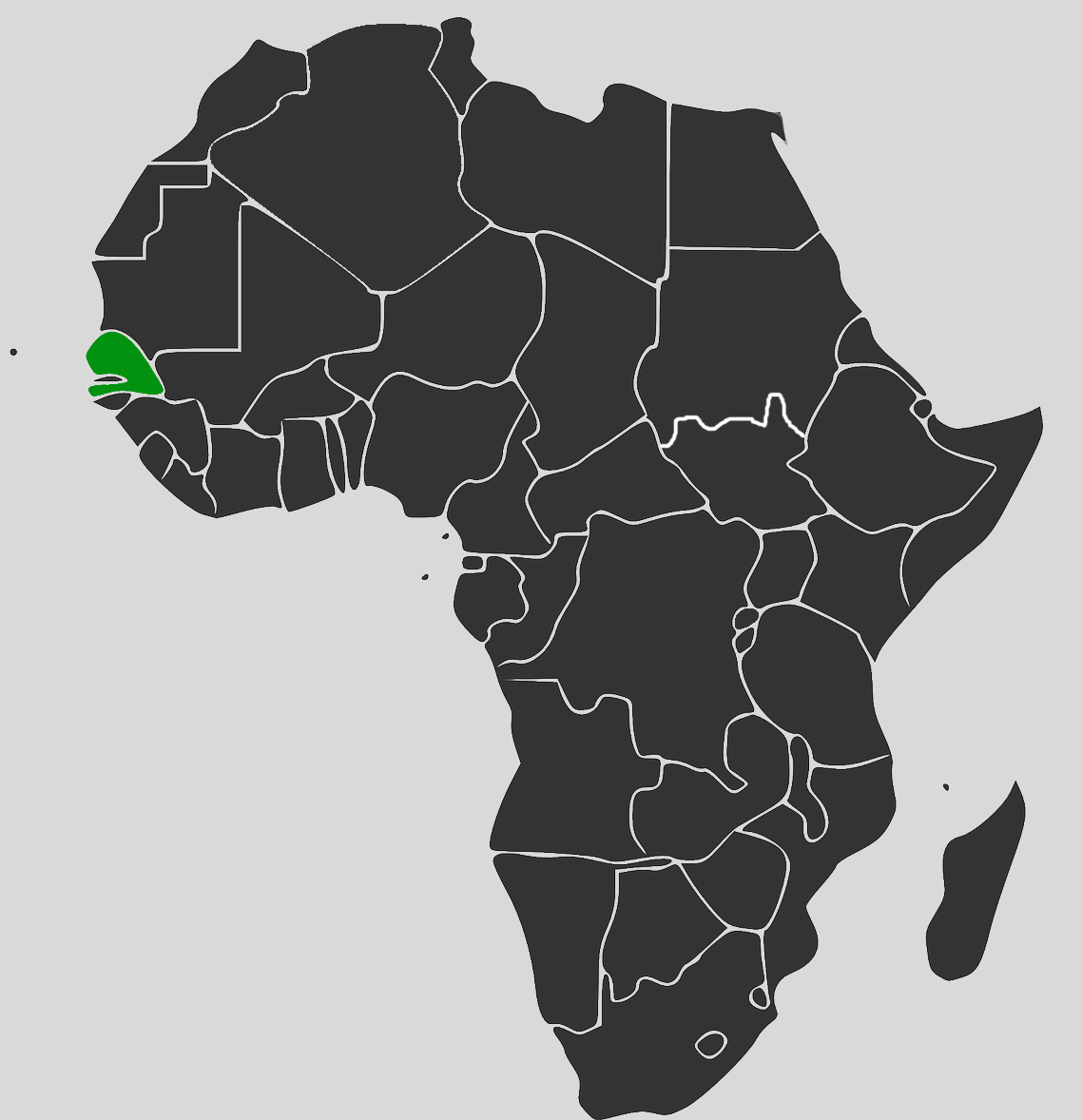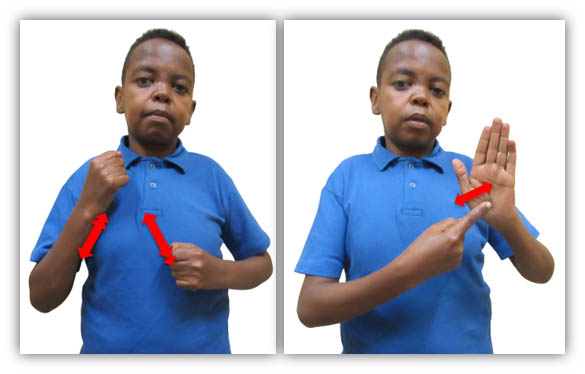Republic of Senegal
Total Population
16 million
Deaf Population
5,000
Nation's Official Language
French
Other Languages
The number of established languages listed in Ethnologue is 39.Among these are:
- Arabic
- Badyara
- Bainouk-Gunyaamolo
- Bayot
- Casamance Creole
- Fulah
- Gusilay
- Jalunga
- Jola-Fonyi
- Kabuverdianu
- Karon
- Kerak
- Mankanya
- Mòoré
- Ndut
- Pulaar
- Saafi-Saafi
- Serer-Sene
- Susu
- Wamey
- Wolof
Name of Sign Language
Mbour Sign Language, American Sign Language (ASL)
Overview Of Deaf Community And Education
Senegal has four deaf schools (WFD 2008:68). In 1977, the Ephphata school was established by Andrew Foster of the Christian Mission for the Deaf (www.cmdeaf.org/resources/cmdhistory). At least one of the schools (the Integrated Medico-psycho-Pedagogical Day School, or EMPPI in brief) was or is using the verbo-tonal method of Yugoslav Professor Petar Guberina (Tending et al. 1989). In 2008, the WFD survey found that the educational approach used in Deaf schools is the Auditory-Verbal method (WFD 2008: 69).
One of the schools is the Renaissance School for the Deaf, founded in 2007 in Dakar, on the road to Hann Mariste II. According to their website, the school uses ‘West African Sign Language’. The website also mentions the use of cued speech and “the gestural method of total communication practiced elsewhere”. Furthermore, the website states: “It is particularly true that in the geographical, social and economic context of West Africa, the practicality of putting in place a system of hearing aids, which are difficult to acquire, increases the daily challenges of managing deafness. Therefore, the ideal is at present, for at least one parent to acquire this « new » language as early as possible so as to quickly enter into communication with the child.” In 2016, the deaf school Graines-de-Cajou opened its six classrooms, by then hosting 38 deaf children.
The Kemper Foundation provides community-based training in for deaf children and their hearing family members in literacy and ASL. Between 2003 and 2016, 42 trainers have been training around 250 deaf children. The training takes place in 25 “Foyers for the Deaf”, spread across the country.
There are no special provisions made for deaf people wanting to receive a university education.
Sign Language Overview
Various sign languages are used in Senegal. According to the WFD survey (2008), a minority of deaf Senegalese uses ASL which was introduced by a private school for the deaf (WFD 2008:64). Jirou (not dated) describes a local sign language in use by a group of deaf people in Mbour409. Her study focuses on variation in iconicity in emerging sign languages in and around Mbour. The country does not formally recognize any sign language. In its statutes, the Fédération Nationale des Sourds du Sénégal (FENASSEN) stated in 2018 that it aims to “promote a national sign language and its recognition”.
Deaf Organizations In Country
- Association Nationale des Sourds du Senegal
- The Fédération Nationale des Sourds du Sénégal (FENASSEN)
Overview of Interpreting Services
According to the WFD survey (2008: 73), there are two sign language interpreters. There are no sign language interpreting qualifications. There are no sign language interpreting services offered by national or non-governmental organizations. At the occasion of Deaf Week in 2017, the president of the Collectif des Sourds du Sénégal Aminata Fall Mme Mbacké urged the government to provide deaf Senegalese with sign language interpretation in hospitals and in TV programs. The WFD survey (2008:51) states that there are no national campaigns on HIV/AIDS that are made accessible in a sign language.
Resources
Apanews (2017). Les sourds réclament des “interpretes de signes” dans les structures de sante. Apanews: http://www.seneweb.com/news/Sante/les-sourds-reclament-des-lsquo-rsquo-int_n_228345.html
Christian Mission for the Deaf: http://www.cmdeaf.org/
Jirou, G. (n.d.). Description d’une langue des signes informelle en dehors du milieu institutionnel: Analyse lexicale du parler gestuel de Mbour (Sénégal). DEA thesis. Université Paris 8.
Ndiaye C, Ahmed H, Tall A, Diom ES, Deguenonvo REA, et al. (2018) Profile of Sensorineural Hearing Loss in a Sub-Saharan Africa ENT Service. J Otol Rhinol 7:2. doi: 10.4172/2324-8785.1000338
Sangaré M. L. (1978). Sourd-muet: je demande la parole. Dakar: Nouvelles Editions africaines.
Tending, G. et al. (1989) Notre expérience en éducation des enfants sourds-muet au Sénégal: l’externat medico-psycho-pédagogique intégré (EMPPI) de Dakar. Dakar Médical 34. 1-4.
WFD (2008) Global Survey Report. WFD Regional Secretariat for Western and Central Africa Region (WFD WCAR). Global Education Pre-Planning Project on the Human Rights of Deaf People. World Federation of the Deaf. Finland.
List of Contributors
Victoria Nyst



